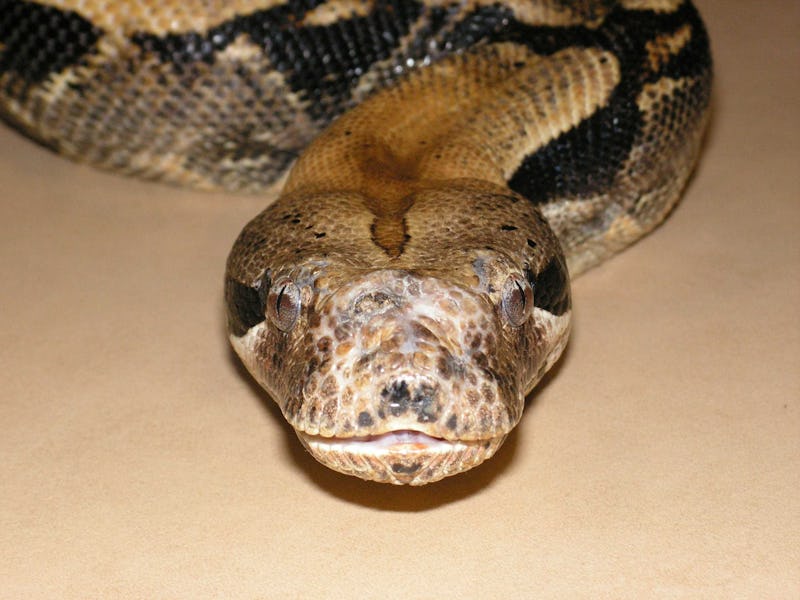Virgin Births of Snakes Happen for a Reason
The reason why remains a mystery, but a recent study says it’s neither mandatory nor strange.

Many snakes that make babies without fathers choose to do so, a recent study reports.
The December 24 article “The emerging phylogenetic pattern of parthenogenesis in snakes” is a look into how commonly the reptiles achieve asexual reproduction instead of hooking up ( AKA “facultative parthenogenesis, or “FP)—but on the other hand, how rarely the reptile can only go it solo (or “obligate parthenogenesis”).
Snakes, as the study tells, are no strangers to asexual reproduction—yet despite such behavior being a common occurrence, only a single species (Indotyphlops braminus, AKA the Brahminy Blind Snake) relies solely on male-free conception. So why would a snake pick to mother young without a partner?
At one point, researchers thought FP was taking place because the lady serpents were captive, isolated from the opposite gender—but this latest study finds that asexual reproduction may be a distinct part of vertebrate evolution.
The data was taken from the studies of several snakes—including Pythonidae (pythons), Boidae (boas), and Natricinae (water snakes, garters, other common snakes), among others—20 sorts in all, either “wild-collected” or “captive-born.” Not all the offspring produced survived, or were entirely healthy—but that’s not the point—what counts is that all these different classes of snake came through without a male’s touch—and this doesn’t just result in clones but female and male progeny.
Add to these finds the details from a 2012 study that found copperheads and cottonmouths delivering wild FP broods, and it seems as if there may be a bigger reason this takes place.
Unfortunately, why it takes place or what purposes it may serve remain undetermined—as the study concludes, “we emphasize that our review of the emerging properties of parthenogenesis in snakes is preliminary because our understanding of these reproductive phenomena is in its infancy.” However, the work is intended to open the door toward a better understanding of such reproductive behavior, adding “our review provides the necessary first steps for phylogenetic interpretation of the origin and evolution of parthenogenesis in snakes and indicates precisely where further research would be most beneficially applied.”